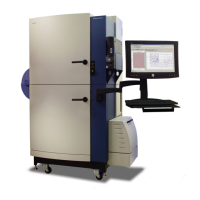0112-0109 H 13
1
System Overview
This chapter provides an overview of the FLIPR
®
Tetra High Throughput
Cellular Screening System requirements.
FLIPR
®
Tetra Systems are fluorescence- and luminescence-based
microplate readers with an integrated 1536-, 384- or 96-pipettor. They
perform rapid throughput cell-based assays while providing accurate
and precise kinetic data. Primary applications include intracellular
calcium mobilization and membrane potential. In addition, an expanded
choice of wavelengths enables you to utilize a broad range of
fluorescent dyes.
The FLIPR
®
Tetra System includes:
• Simultaneous 96-, 384- or 1536-well liquid or cell transfer
• Expanded wavelength support
• User-configurable pipettors and optics
• Agile internal plate handling
• Standard, (EMCCD) camera for fluorescence applications or
Aequorin, (ICCD) camera for fluorescence and luminescence
• Cell suspension option
• Slim platform with minimal facilities requirements.
An overhead pipettor delivers compound to all wells of the read plate
simultaneously. A protocol file configured in ScreenWorks Software—
the system-control and analysis program for FLIPR
®
Tetra System—
coordinates timing of compound delivery with multiple time-point
exposures so that the resulting sequence of data points spans
compound addition.
ScreenWorks Software displays relative light units versus time for all
1536-, 384- or 96-wells on the system’s monitor. Updates occur in
real-time as allowed by processing speed. Data can be exported as
relative light units over time (time sequence), or as a single value per
well (statistic). Export data files are in ASCII text file format for input
into spreadsheet or database programs.
Fluorescence Mode
In fluorescence mode the system’s LEDs illuminate the bottom of a
1536-, 384- or 96-well ‘read’ plate containing cells loaded with
fluorescent dye, and measure the fluorescence in each well. By taking a
sequence of measurements in conjunction with compound application,
changes in fluorescence emission characteristics due to the binding of
particular ions (for example, Ca
2+
, H
+
or Na
+
) can be tracked.

